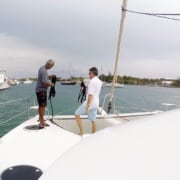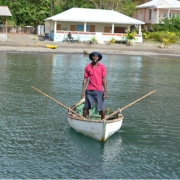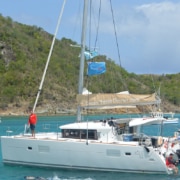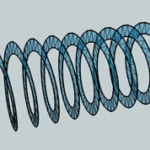Mooring, Anchoring, and Docking
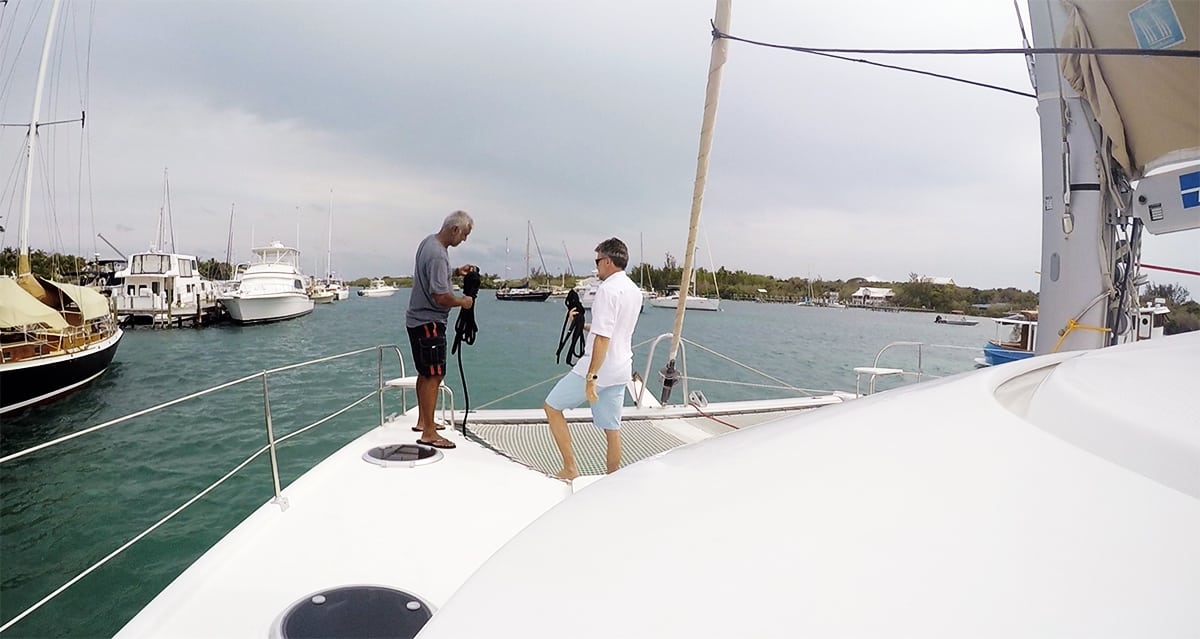
This tidbit tip of mooring, anchoring, and docking information was written by Michael Domican. Michael is our Caribbean Sailing Coach and is a NauticEd school in the BVI. If you’re wanting some private training in the BVI from a true professional, Michael is your guy. He is an RYA Yacht Master Instructor and therefore has been through the wringer many times to reach that level of profession. Michael is also a qualified NauticEd instructor and can train you and sign you off on NauticEd’s Crew, Skipper, or Bareboat Charter Master certifications as well as complete the assessment for your SLC Mediterranean sailing license. Michael’s website is www.caribbeansailingcoach.com
Before you leave a dock, approach a dock, pick up a mooring ball or drop anchor, it’s important to know what the wind and current will be doing to your boat throughout the procedure as well as afterward. Even without the sails, most modern yachts have much higher topsides than similarly sized boats 20 or even 10 years ago. Add to that the boat’s stack pack, furled-up jib, mast and boom, dodger and bimini and you’re dealing with a lot of windage that you can’t get rid of. Windage is the effect of everything above the waterline that is being affected by the wind.
Windage is pretty easy to determine. It is based on the velocity of air which you can feel. But know this, each time you double the velocity you get 4 times the force of windage on your boat. So, much like a drill sergeant inspecting troops on parade, ‘look ‘em up and down’, look up to the masthead or nearby flags, smoke, and/or ripples on the water to check the wind direction.
Current, however, is a wee bit different. Since water is nearly 800 times denser than air, it doesn’t take a lot of water flow to profoundly carry your semi-submerged vessel with it. To determine if there’s any current, look against nearby fixed objects in the water such as mooring balls, buoys, dock pilings, other boats. if you’re in a tidal zone and parking p an estuary, you’re guaranteed to get tidal current the changes with the tide cycle.
The trouble with the current, is that it rarely aligns with the wind. So look for clues as to the combined effect of the moving air and water around you. In a mooring field or anchorage, the direction that the boats closest to you are pointing is the combined effect of the wind and the current.
Mooring and anchoring. We’re always told to approach the mooring ball or drop anchor from downwind. Actually, in high current and low wind situations, this might not be the case. As stated above, the test is to observe the other boats around you. But what if there are no other boats? It’s best to just stop the boat and observe how the boat moves. Is it being blown by the wind or is it being moved by the water flow? Which is dominant? In situations where the current is dominant, you’re best to approach from down current, which is not necessarily downwind.
Docking: Unless you’re used to docking in current, this can be a real challenge for many. It is like being on a moving carpet and trying to time your step off point considering the direction and the speed of the carpet to perfectly stop in a place off the carpet. It is not easy and experience is the only thing that can give you the confidence you need. So how do you gain that experience? The answer is simple – don’t do it in the tight marina and use hope as your only tool. Pick a mooring ball and go play with it first where you can get the feel for the rate of drift and also the momentum of your boat and how they both interact.
Knowing the above, the biggest advice I can give you is to practice at any opportunity you can get that is NOT is the marina close to other boats or docks.
ADDED NOTE by Grant Headifen, Global Director of Education for NauticEd.
Maneuvering Under Power is the greatest overlooked skill in sailing and the least taught while mistakes here have the greatest chance for expensive damage. NauticEd’s online Maneuvering Under Power course, gives you all the tricks and tips to become an expert in the marina. It covers maneuvering backwards, Mediterranean mooring technics, momentum, maneuvering with current and wind, backing into slips from all wind and current angles, how to deal with prop walk and so much more. The course has 26 exercises that you can practice on your own on the water to gain the confidence you need.
Take the NauticEd Maneuvering Under Power online sailing course

Maneuvering a Sailboat Under Power Course
The Maneuvering Under Power Course book is also available in hard copy from Amazon. The hardcopy book is unique. Embedded are QR codes that allow you to run videos and animations right from inside the book. Check it out.
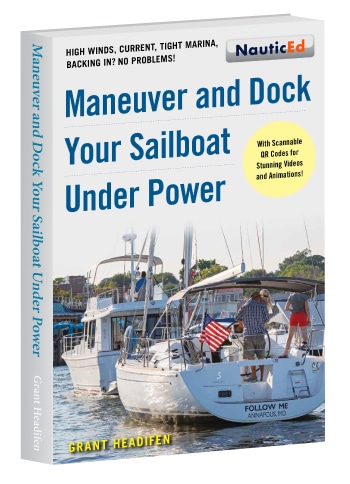
NauticEd Maneuvering Under Power Book

